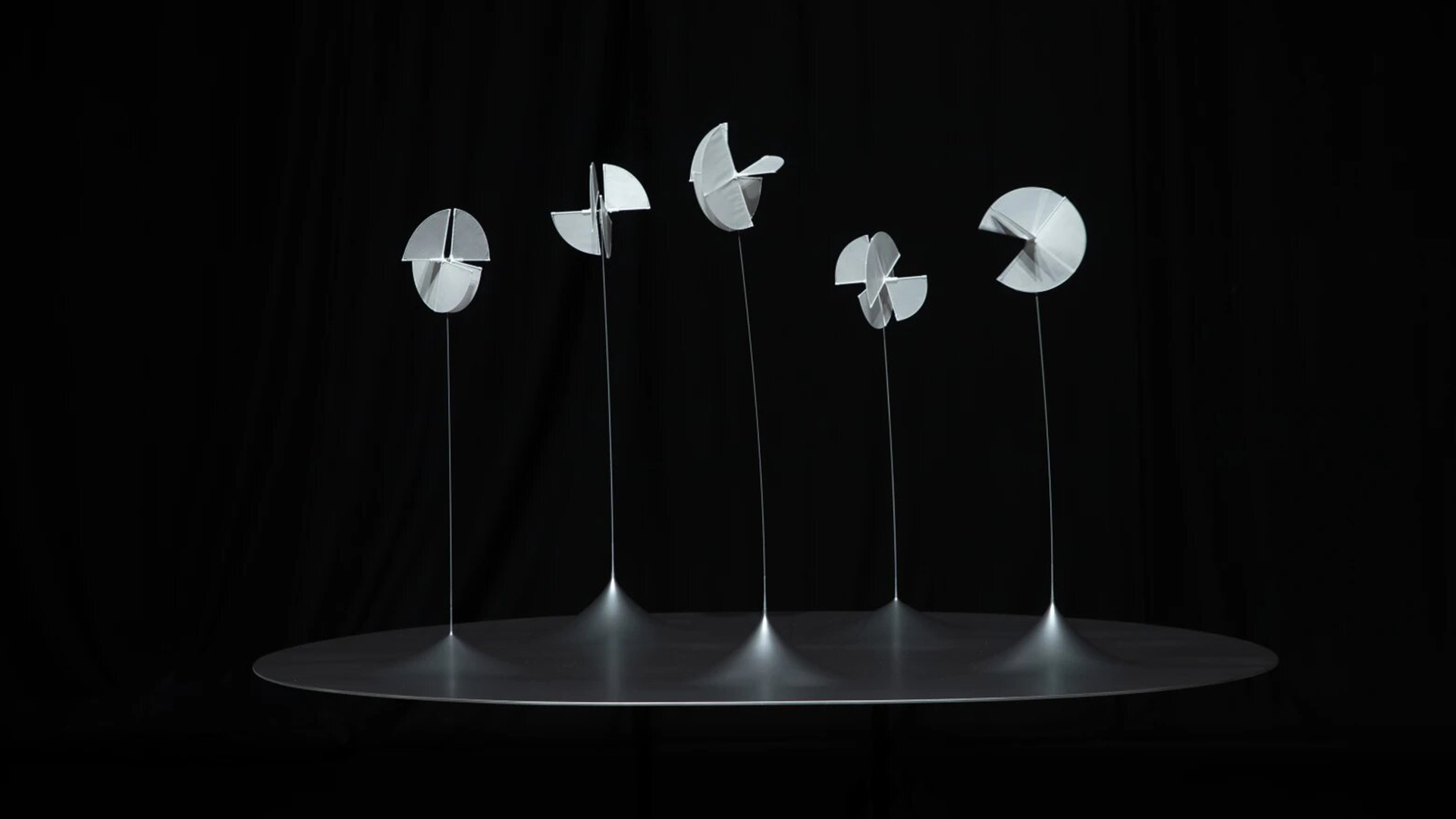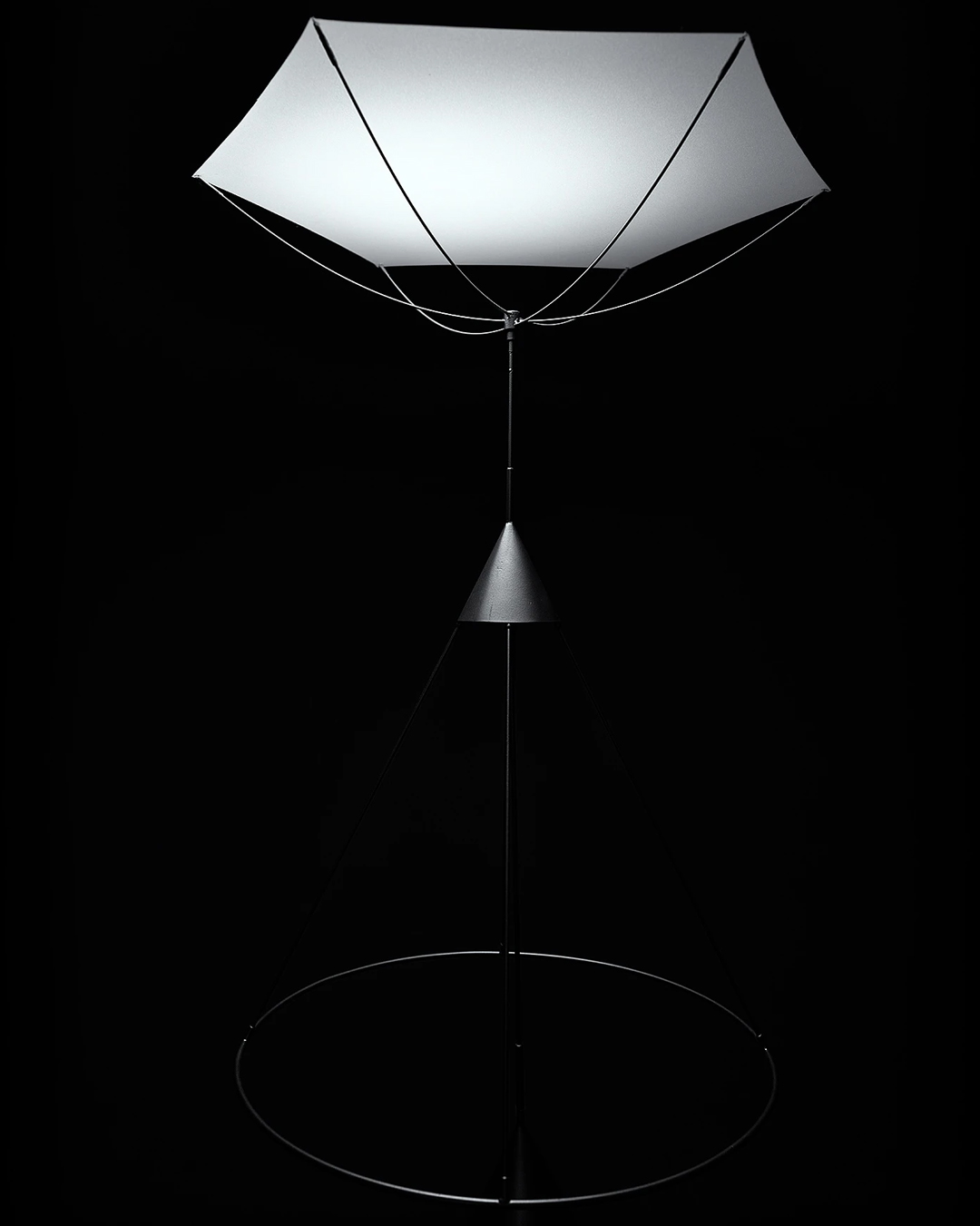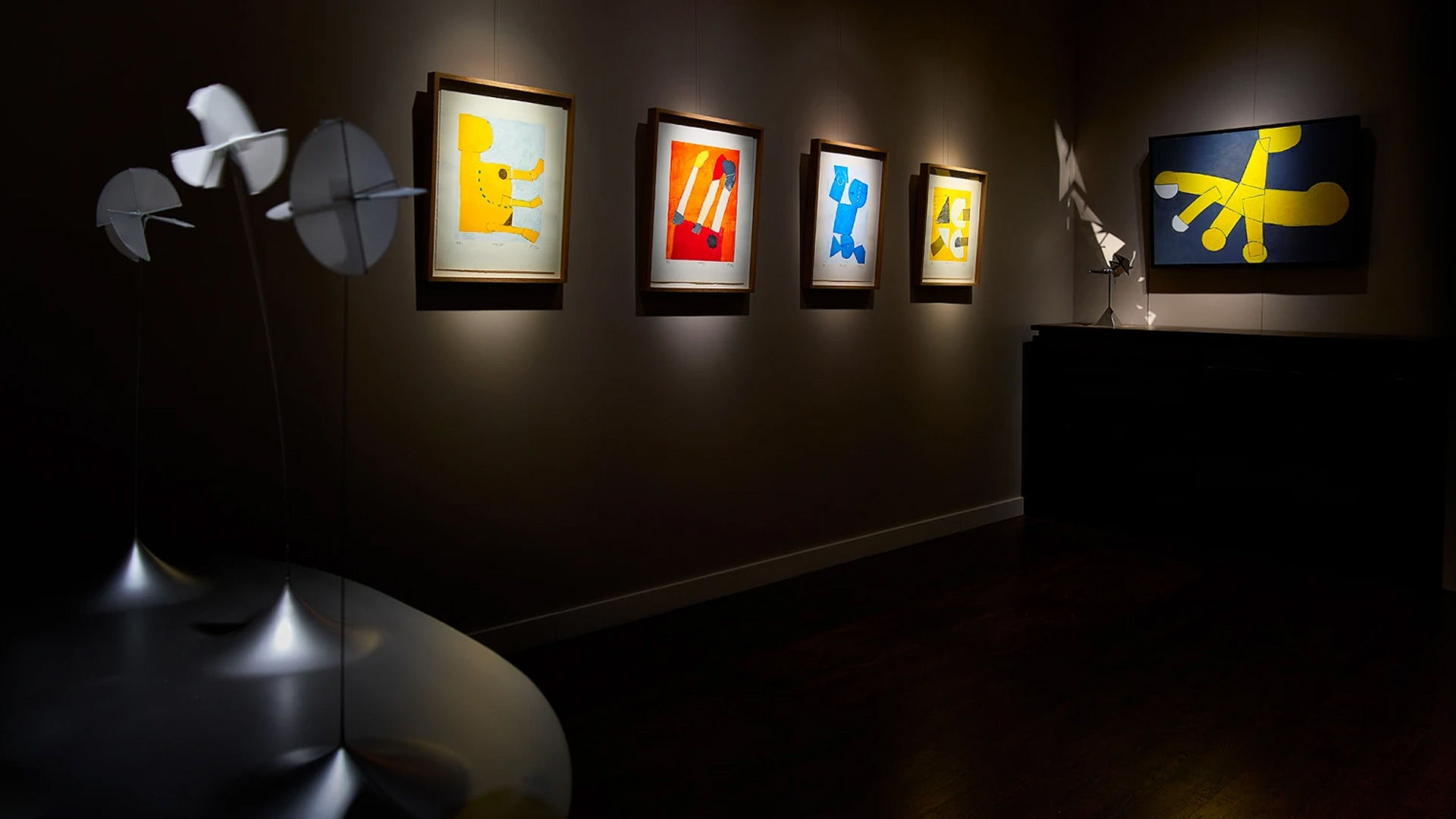New York City – Ippodo Gallery is delighted to present renowned kinetic sculptor Susumu Shingu’s first solo exhibition in the United States. Sculpting with Wind will open on October 20th and run through December 29th, 2022. Ippodo Gallery will commemorate this exceptional showcase of drawings, interior sculptures, and colourful abstract paintings with an opening reception featuring the artist, who is visiting from Japan, on October 20th from 5-8 pm EST. This special exhibition for New York will also feature several large-scale exterior proposals.
Susumu Shingu’s kinetic sculptures oppose the perception that our environment is eternal and static. As natural forces activate a Shingu sculpture’s hinged joints, the viewer becomes keenly aware of their participation and relative scale in Earth’s ecosystem. The artist’s work strives to foster an appreciation for our unique and shared home, planet Earth. Shingu’s permanent large-scale outdoor sculptures serve as a visual reminder of the constancy and immensity of the Earth’s natural forces – wind, water, light, and gravity – that affect our human lives.
Shingufs large-scale public works have been installed in Brazil (Sao Paulo1), France (Margaux2; Chambord3; Paris.), Italy (Milan.), Japan (Osaka.; Tokyo.; Hyogo.), South Korea (Seoul.; Asan1.), Taiwan(Hsinchu11), and the United States (Cambridge12; New York City13,1.).
Integrated with the architecture or landscape at intentionally diverse locations, his visually expressive, durable, and elegantly engineered sculptures are conceptualized for site-specific environmental conditions. Each work is irreplaceable. The deliberate choice in dramatically different climates engages an intercultural audience and teases out the deep connection between nature and human beings.
Integrated with the architecture or landscape at intentionally diverse locations, his visually expressive, durable, and elegantly engineered sculptures are conceptualized for site-specific environmental conditions. Each work is irreplaceable. The deliberate choice in dramatically different climates engages an inter-cultural audience and teases out the deep connection between nature and human beings. 1. “Reflection of Rainbow,” 1997, Itaú Bank, São Paulo, Brazil, 2. “Wings of the Earth,” 2005, Château d’Arsac, Margaux, France 3. “Une Utopie d’Aujourd’hui,” 2019, Château de Chambord, Chambord, France 4. “Sinfonietta of Light” 2012, Jardin des Tuileries, Paris, France 5. “Cloud of Light,” 2004, Il Sole 24 Ore, Milan, Italy 6. “Boundless Sky,” 1994, Kansai International Airport, Osaka, Japan 7. “Hommage au Cosmos,” 2001, Maison Hermès, Ginza, Tokyo, Japan 8. “Astral Dialogue,” 2017, Sanda City Hall, Hyogo, Japan 9. “Wings’ Breath,” 1988, Olympic Park, Seoul, South Korea 10. “Greetings of the Sun,” 2005, Pinnacle Land, Asan, South Korea 11. “Silent Conversation,” 2007, National Tsing Hua University, Hsinchu, Taiwan 12. “Gift of the Wind,” 1985, Porter Square MBTA Station, Cambridge, MA, USA 13. “Distant Sky,” 2012, Mercedes House, New York City, NY, USA 14. “Rainbow Leaves,” 2021, 565 Broome Street, New York City, NY, USA
Sculpting with Wind visualizes the constant presence of rudimentary energy in our interior and exterior lives. Seven two-dimensional gouache works (Memory, 2022) and eight interior kinetic sculptures (Moonboat, 2022; Moonlight, 2022; and Little Flower, 2013), investigate how site-specific environments engender certain behaviours. His wondrous churning objects have made Susumu Shingu a favourite of well-known architects, including Tadao Ando, Enrique Norten, and Renzo Piano, who notes that though “wind is invisible, Shingu makes it perceptible; fleeting energy that he gives shape.”
Perhaps the most well-known American kinetic sculptor of the 20th century, Alexander Calder relied on minimalism, primary colours, and steel to reimagine the mobile. Shingu’s sculptures employ similar themes, however, his works are not restricted to a single mould. For the artist, the interaction between the local environment and sculptural material is as much art as the sculpture itself. When Shingu creates a new work, the specific location determines his artistic choices; Sculpting with Wind explores the relationship between ultra-lightweight metal and wind. Although initially trained as a painter, Shingu’s mission to share with others in the sensory experience of life on Earth has led to the Susumu Shingu “Wind Museum” in Sanda, Hyogo and hand-drawn children’s books about animal and plant lifecycles.
The artist continues to collaborate with architects, museums, and institutional collectors to create large-scale outdoor works for special urban and rural sites.
Read more +
Read less -







 Sign in with email
Sign in with email




